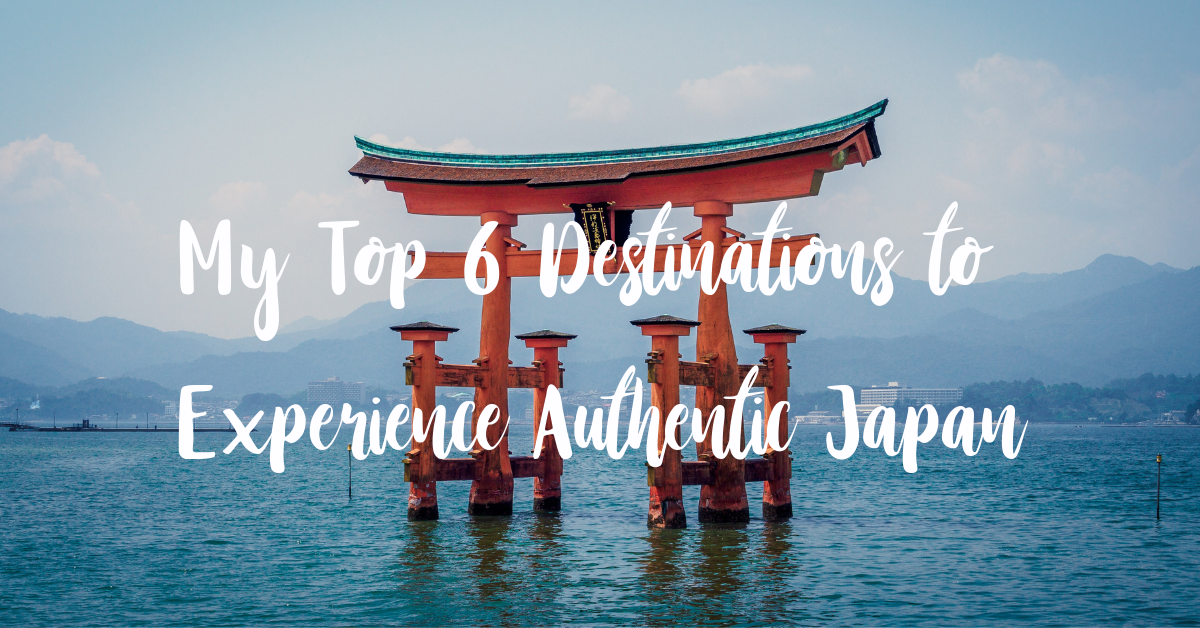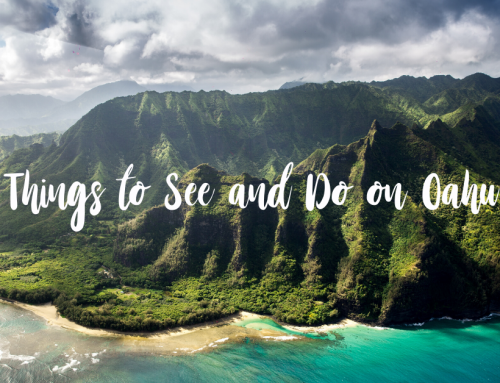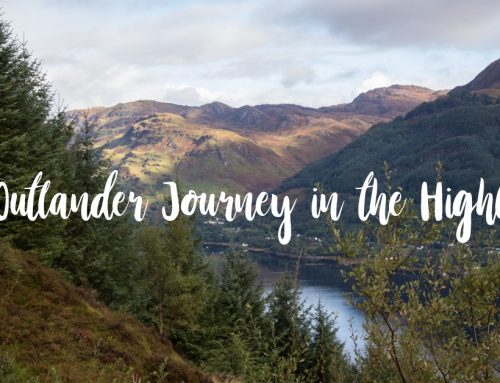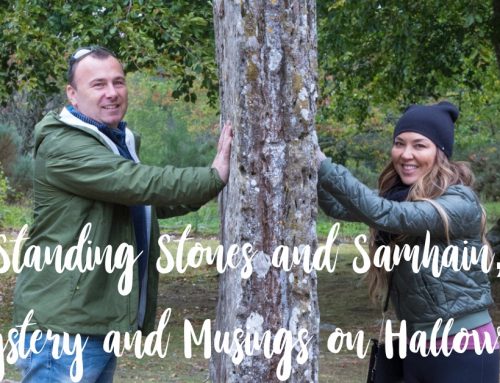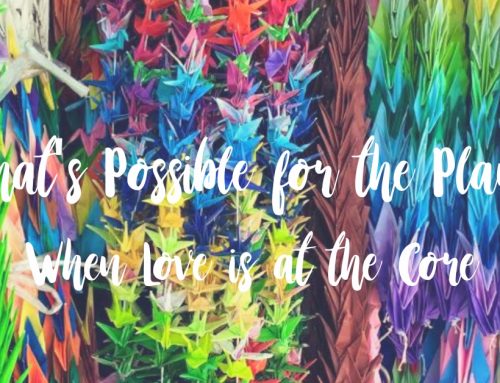Japan is a popular travel destination, but I always feel a little disappointed when people only travel to Tokyo and Kyoto and feel that they’ve seen Japan. I suppose it’s a little like visiting New York City and feeling like you’ve seen America. Like New York, Tokyo and Kyoto are amazing travel experiences and worthwhile to visit. But they’re so over-commodified with swarms of tourists visiting all year every year that they lack the authenticity that other places around Japan still hold. Sure, Ginza, Roppongi, Akibahara Electric Town, Shinjuku, Tokyo Tower, Tsukiji Market, the Imperial Palace, Asakusa, Shibuya, and the Meiji Jingu Shrine are all must-see destinations in Tokyo. Of course, if climbing the iconic Mount Fuji is on your bucket list, by all means climb away. And no trip to Japan is complete if you haven’t visited its former capital, the ancient city of Kyoto and the many temples and shrines it’s famous for. But don’t stop there. While these mainstream destinations are on every Must-See and Must-Do list for visiting Japan, if you fail to travel beyond them, your experience of Japan will be limited. Although still very much a part of ‘real Japan,’ they somehow lack the deep authenticity of Japan’s unique culture that you get when you travel to destinations that don’t specifically cater to foreign tourists.
If you’re travelling all the way to Japan, there’s so much more to see and do in Japan that are far more authentically Japanese, where you can really connect with the culture. After you see the mainstream destinations, definitely leave time to get off the beaten path. I promise that you will have a much more profound and authentic experience. There are so many extraordinary destinations in Japan to choose from. Here are some of my favorites:
- Mount Unzen, Nagasaki Prefecture, Kyushu
Mount Unzen, located in Western Kyushu on the Shimabara Peninsula in the Nagasaki Prefecture, has been a holiday destination I’ve been visiting my whole life since I was a little girl as it’s near my mother’s hometown of Shimabara. Mount Unzen is a group of composite volcanoes and the area is full of natural hot springs. The highest peak of Unzen, Mount Fugen, is 4462 feet high. It’s an amazing day hike. A few years ago, my family hiked it with my then ten year old son, ten year old nephew and eight year old son. You definitely have to be in decent shape. There are a lot of steep steps, but the view at the top is unbelievable. Unzen Onsen is a tranquil hot spring resort town in the Unzen Amakusa National Park, surrounded by hot spring fields everywhere. Steam billows straight out of the earth from the vents and milky, boiling water bubbles straight out of the ground. The area is an onsen paradise, loaded with public and private baths at ryokans (traditional Japanese inns) and hotels that dot the region.
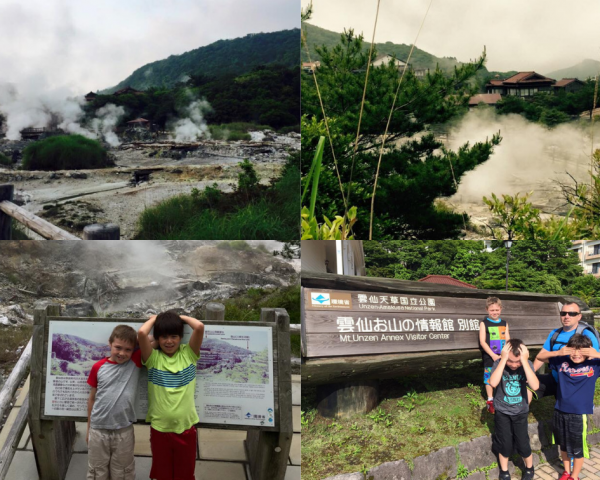
Mount Unzen’s Hot Springs Fields
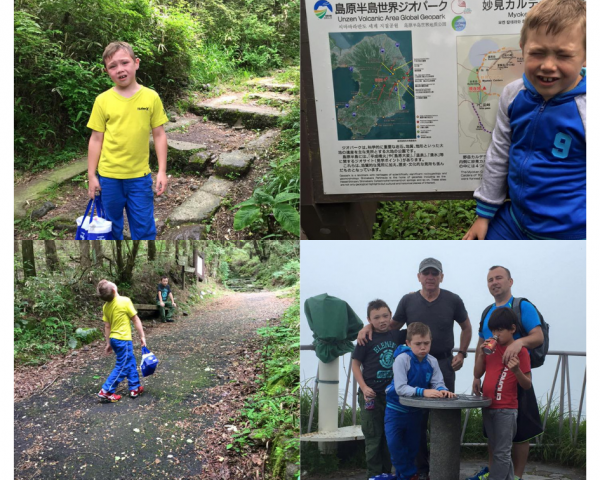
Family Hike Up Fugen, Unzen’s highest peak. Jei was not a happy camper. He kept crying “more steps!”
- Nagasaki City, Nagasaki Prefecture, Kyushu
About a 45-minute drive from Mount Unzen is Nagasaki. Nagasaki is famous for two things: as the second city devasted by the Allied nuclear attack on Japan in World War II and as the setting for one of the best loved romantic operas, Madame Butterfly. That said, you must visit Peace Park and the Nagasaki Atomic Bomb Museum for a glimpse of that time period from the Japanese perspective. Then head over to Glover Garden, a symbol of a long history of trade with the west and also the inspiration for Madame Butterfly, the famous opera. Glover Garden is an open-air museum of mansions and former residences once lived in by the city’s foreign merchants from the west so you’ll get gorgeous, sweeping views of Nagasaki Harbor. The most famous residence is Glover House, the home of Thomas Glover, a Scottish merchant who moved to Nagasaki in 1859 and was well-known for his active role in shipbuilding, railway and mining, and was a major contributor to the early history of Japan’s modernization. Interesting fact: Glover assisted revolutionaries who eventually overthrew the Tokugawa Shogunate in the Meiji Restoration.
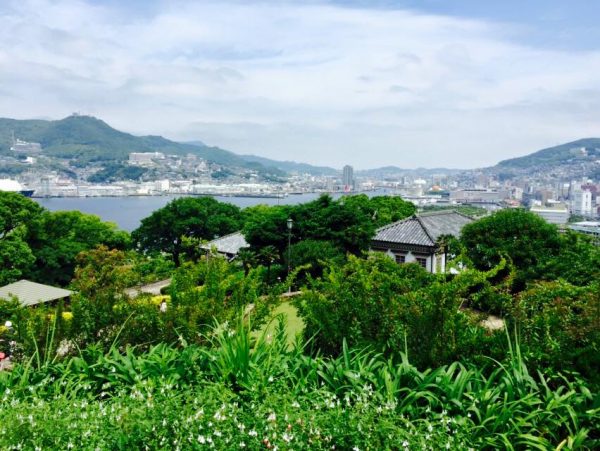
View of Nagasaki Harbor from Glover Garden
- Fukuoka City (also known as Hakata), Fukuoka Prefecture, Kyushu
Fukuoka is a great cosmopolitan city holiday destination. It’s off the beaten tourist path, but still gives you a taste of Japanese city life as Kyushu’s largest city. It’s one of the major cities on the island of Kyushu, one of Japan’s four main islands, which seems to get missed by most travelers to Japan. Fukuoka is known for its incredible food – arguably the very best in all of Japan. Go to Canal City for the best shopping and restaurants around. Fukuoka is the home of tonkotsu ramen. Eat it anywhere – even Hakata train station – and it’s sure to beat ramen you’ve had anywhere else in the world. One of the best places to try it is at one of the city’s famous yatai (food stalls).
- Hiroshima City, Hiroshima Prefecture, Honshu
More impressive than Nagasaki’s Peace Park and Atomic Bomb Museum is Hiroshima’s Peace Memorial Museum and Hiroshima’s Peace Park. Hiroshima was the site of the first atomic bomb detonated at the end of World War II, on August 6, 1945. I’ve probably been to the museum a dozen times or more in my life, and it is always a moving, heart-opening, tear-jerking experience. On so many occasions visiting the museum as a teenager, I saw full-grown, battled-hardened U.S. Marines leave the museum in a daze of raw emotion and tears. The museum features the history of Hiroshima before and after the atomic bomb. The museum spearheads a global movement toward nuclear disarmament and world peace. This ethos pervades the exhibits. It’s almost impossible to comprehend the devastation that occurred in Hiroshima in 1945, but the museum’s exhibits tell a compelling story. There’s a stone staircase with a haunting imprint of a human body, a shadow of life left on the structure when the body disintegrated in the blast. There are tattered clothes, school uniforms and backpacks Japanese school children wore when they were caught by the blast, burned and injured. There are jars of body parts that boiled off victims’ bodies from the radiation. There’s a mangled tricycle that belonged to a three-year old boy who later died from effects of the bomb. This is one museum in Japan you can’t miss. The museum sits in the middle of Hiroshima’s Peace Park, where you can see the thousand paper cranes people offer for peace. Last time we went, we were lucky enough to meet a Japanese man making a documentary about the generation of survivors and how they are doing today. He himself was in his mother’s womb in Hiroshima when the blast went off. A quick walk from the museum, you can see the famed Atomic Bomb Dome, a World Heritage site. It’s just a mere few meters from the hypocenter of the atomic bomb blast.
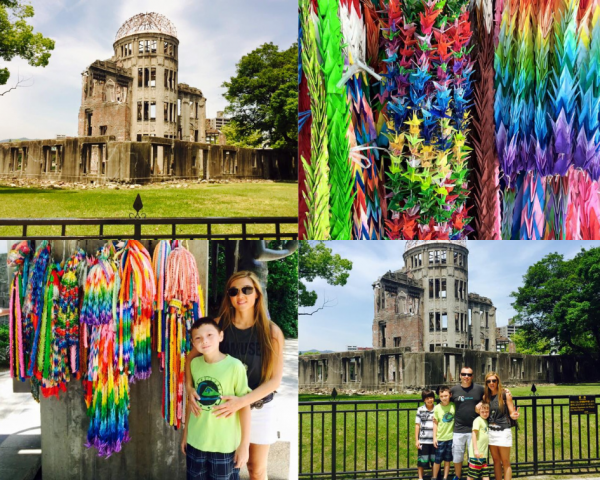
Hiroshima A-Bomb Dome, 1000 Cranes for Peace
- Miyajima Island, Hiroshima Prefecture, Honshu
Miyajima Island is one of my favorite destinations in all of Japan. Aside from personally having amazing childhood memories here, it is also one of the most scenic places in Japan. You’ve probably seen the famous Torii in the water, the “floating” torii gate. The great Torii is said to be the boundary between the spirit world and human world. It was first constructed in 1168. Miyajima Island was said to be an Island of Gods. The island itself was worshipped as a god in ancient times. Miyajima is home to many shrines and temples, including Itsukushima Shrine, one of the most significant shrines in all of Japan and the only shrine in the world built on top of water. Itsukushima Shrine is a UNESCO World Heritage Site and is also listed as one of the National Treasures of Japan by the Japanese government. It’s a mystical shrine of incredible beauty and the island itself will transport you to another time.
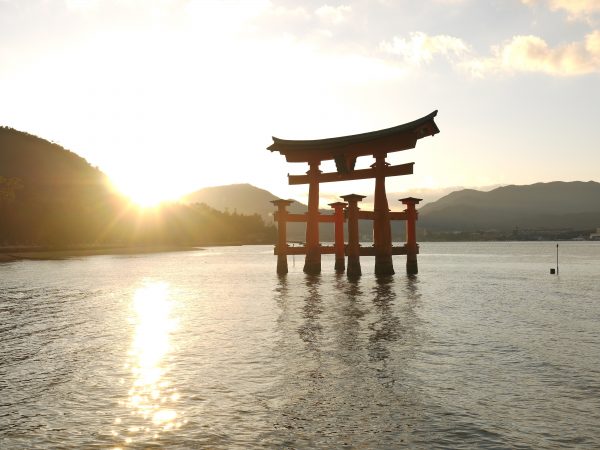
Floating Torii, Miyajima
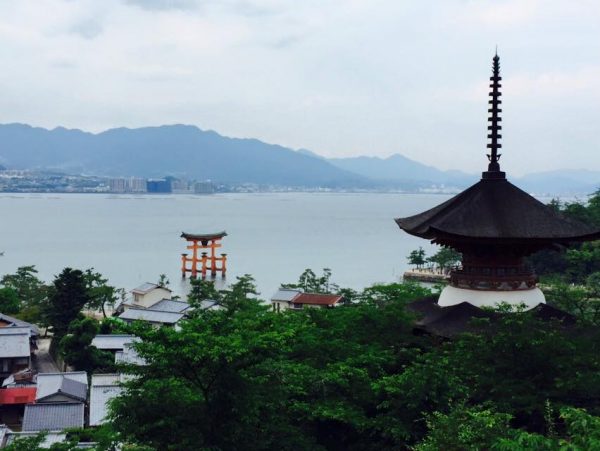
View from above Itsukushima Shrine, Miyajima
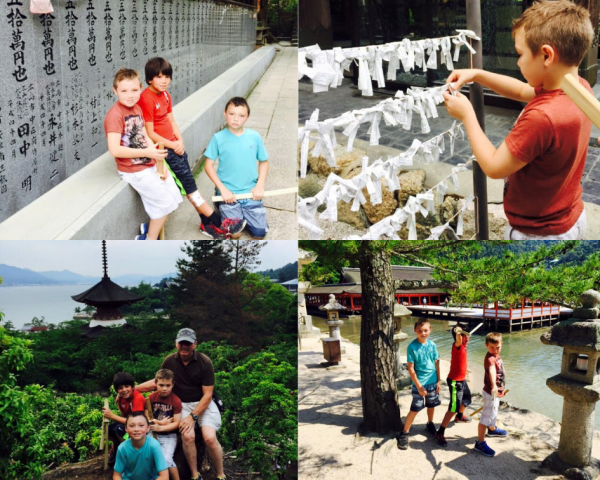
The boys playing and praying around Itsukushima Shrine
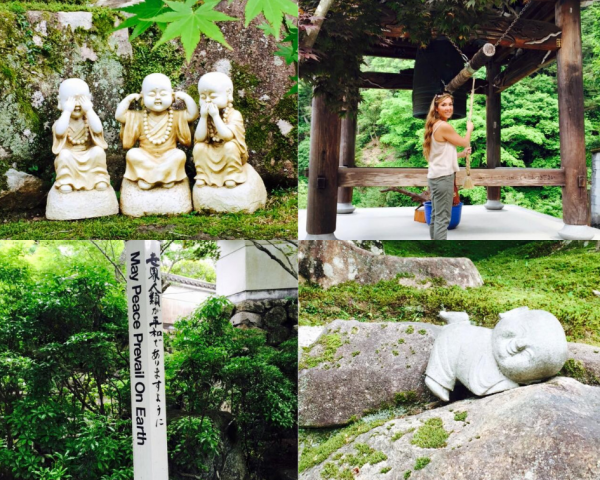
Itsukushima Shrine, Miyajima
- Kintai Bridge, Iwakuni City, Yamaguchi Prefecture, Honshu
About a 45-minute train ride from Hiroshima, in my own hometown of Iwakuni, stands Japan’s most famous bridge, Kintai-kyo. It was the backdrop of so many memories during my adolescence: so many picnics, hanami (cherry blossom viewing parties), summer bike rides, river swims, Obon festival fireworks, delicious ice cream cones and street food. Kintai was just a scenic part of regular life. Though Kintai Bridge had been Iwakuni’s most celebrated landmark for hundreds of years, I had no idea how famous it was until I moved to the states and saw Kintai take center stage in American Express commercials and advertisements and, most recently, as a poster on the hit TV show, This is Us. Kintai Bridge is featured in the Atlas Obscura. It’s a historical wooden arch bridge, made of a series of five beautiful wooden arches which stand on top of stone pillars. For almost three hundred years, Kintai stood without the use of nails – it was constructed entirely of wood fitted intricately together. Kintai stands at the foot of the mountain, just below Iwakuni Castle. These days, it’s a pedestrian-only bridge. My mom and dad used to ride a motorcycle over it in the seventies. Now you can cross it on foot to visit Kikko Park, Samurai family-owned homes, and take the cable car to Iwakuni Castle for panoramic views of Iwakuni and the Seto Sea.
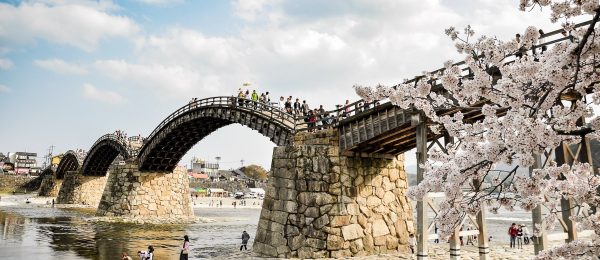
Kintai Bridge, Iwakuni
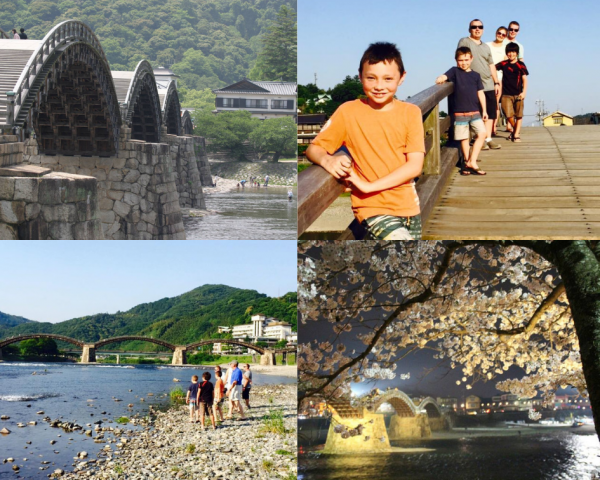
Fun around Kintai
If you’re heading to Japan and want an authentic experience, please consider adding some of these off-the-beaten path locations to your itinerary. If you have any questions, reach out. Japan is my first home. I’ve visited all of these destinations countless times both when I was young and more recently as an adult with my own family. I love to share authentic Japan with fellow travelers and worldschoolers.
